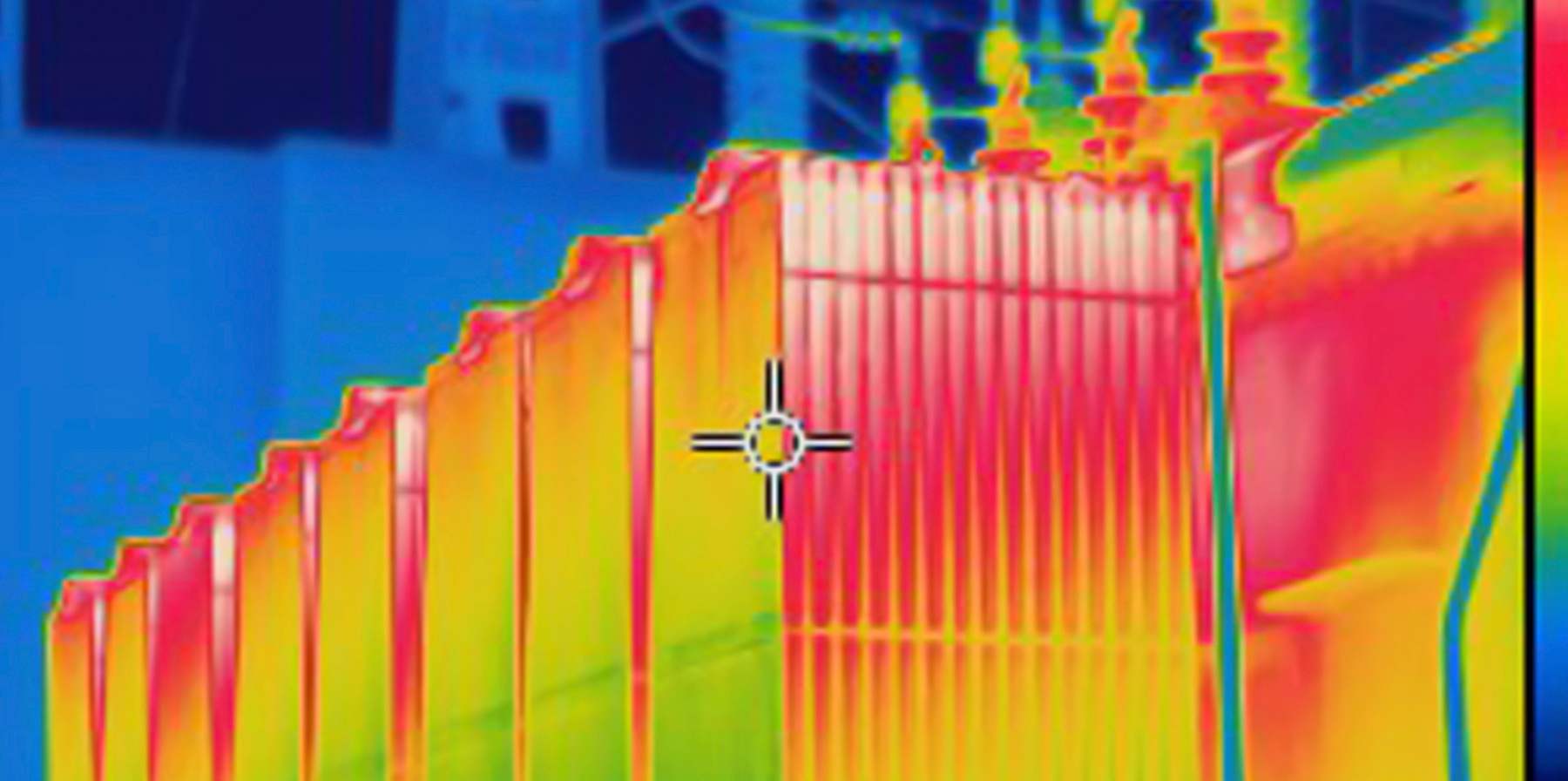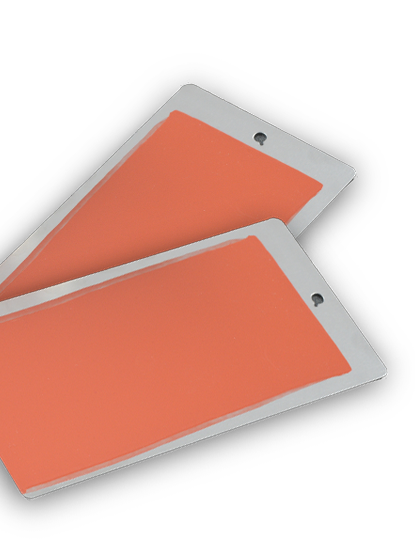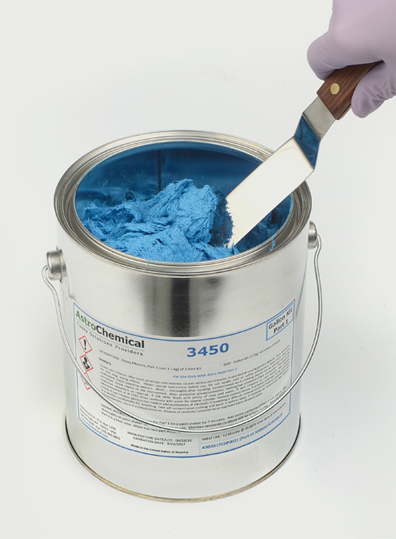Astro Chemical was asked to support a customer’s generator design upgrade by developing a high-temperature, thermally conductive potting compound to meet the new design requirements. The resulting product contributed to an increase in equipment lifespan and enabled a successful, on-time design completion and launch.
APPLICATION OVERVIEW
Reliable, long-term performance of large motors and generators greatly depends on effective thermal management. Traditional potting and encapsulating compounds tend to be thermally insulating, leading to thermal buildup in areas where it can least be afforded. Minimizing and eliminating these ‘hot spots’ may be achieved using thermally conductive materials to transfer heat away from sensitive areas. When developing such a specialized product, it is critical that the formulation and qualification process be guided by a set of well-defined functional properties necessary for success in the end-use application.
CHALLENGE
Astro was tasked by a generator manufacturer to develop a product that would reduce thermal buildup in a high voltage encapsulating (‘potting’) application. This was part of a comprehensive design update which introduced higher temperatures and limitations to cooling flow. After a long track record of successful use, the legacy product no longer sufficed, as the challenges presented by the higher-powered design led to hot spots within the encapsulant and a greater potential for premature failure.
Thermal buildup in high voltage machines can emanate from many factors, including mechanical vibration and the electrical resistance of current flow through the copper conductors. Thermal degradation of the organic materials used throughout, primarily in adhesives, binders, and protective coatings, is one of the root causes of shortened equipment lifespan, unscheduled outages, and outright failures. How well the equipment is cooled significantly influences the efficiency and longevity of a large generator or motor; and is of critical concern to OEMs, maintenance organizations, and equipment owners alike.
In this application, a box or ‘cap’ is used as a form around the high voltage connection and is filled with the dielectrically insulating, mechanically tough epoxy encapsulating product. Given the thermally insulating properties of the encapsulating compound and the heat of the copper, this area quickly experienced significant heat buildup. Astro’s lab was tasked with developing an encapsulant that matched the legacy product’s electrical, mechanical, and thermal properties while providing significantly higher thermal conductivity. The key performance criteria are shown in the table below.
Table 1. Key Performance Criteria
| Critical Performance Properties | Test Method | Target | Result |
|---|---|---|---|
| Thermal Conductivity (130°C) | ASTM C518-17 | >1.0 W/m·°C | Pass |
| Flexural Strength | ASTM D790-17 | >8,000 psi | > 10,500 psi |
| Thermal Class (Flexural Strength) | IEC 60216-1, ASTM D2304-18 | 155°C | Pass |
CUSTOMIZED SOLUTION
Step 1
The development process began with a baseline determination of the thermal conductivity of the cured legacy (control) product, which was measured to be 0.35 W/m·°C. While consistent with expectations, this meant that the new formulation would need to incorporate a significant concentration of thermally conductive filler to achieve the required ≥1.0 W/m·°C conductivity threshold. The addition of thermally conductive components must also not detract from the required mechanical, physical, or electrical properties, and could not significantly alter the consistency or cure speed of the product when mixed and applied.
Step 2
Our formulation chemists selected a variety of thermally conductive filler candidates from our materials database, performed the formulation ‘benchwork’, and tested thermal conductivity at various levels and ratios. Due to the dielectric insulating properties required, only non-metallic conductive materials were considered. This process resulted in 32 candidate systems using blends of three conductive fillers. All candidates were then screened by measuring flexural strength at room temperature to eliminate those with compromised mechanical properties.
Step 3
All candidate formulations that met the thermal conductivity and mechanical strength requirements were evaluated for cure time and physical consistency, the latter of which was critical to ensuring proper encapsulation when used in the application process. Samples that were found to be too thick, or lacked the ability to conform properly when applied were eliminated from consideration.
Step 4
Remaining candidates were then assessed for thermal classification via flexural strength. In collaboration with the customer’s engineering team, it was determined that maintaining at least 50% flexural strength at 10% weight loss using Table 1 of IEC 60216-1 (p. 57) for the 155°C to 164°C condition would be acceptable for a Class 155°C classification. Samples of the remaining candidates were produced and aged at various temperatures, then tested. The resulting data indicated that all candidate formulas exceeded the specification criteria established.
Step 5
Lastly, all remaining candidate formulas were run through thermal cycle testing. This evaluation was a critical functional requirement of the application, in which the cured epoxy compound experiences significant expansion and contraction of the encapsulated copper connections. The test entails a proprietary protocol designed to replicate conditions experienced over the lifecycle of the equipment, and subjects the cured candidates through numerous temperature cycles, from very hot to very cold. Each sample was then closely inspected for cracking. A passing grade was assigned to samples found to be free of any visible cracking.
Customer Evaluation & Qualification:
Once the development process was completed, the customer was supplied two candidate products showing the highest degree of ‘fit’ to their requirements. After reviewing the test data and evaluating the candidates in both the lab, and full-scale qualification testing, the customer selected one to specify for use in their design. Astro continued to work with the customer’s production engineers to implement the new product into their process and educate the operators who would be applying the product in the new design. As a result, the customer successfully mitigated their hot-spot issues, ensuring a long service life and the successful launch of their new design.




